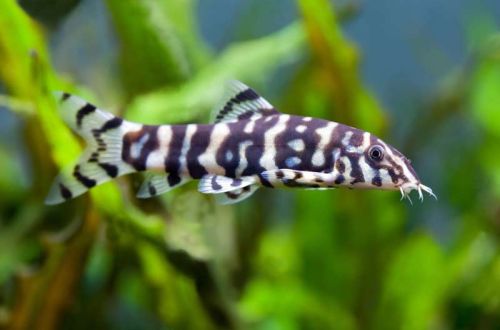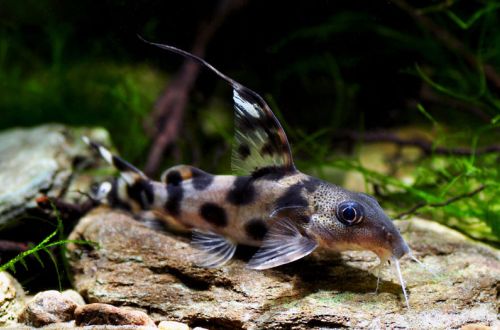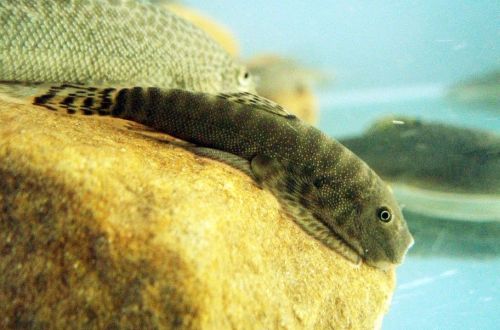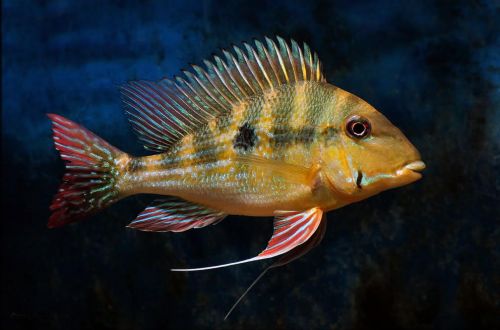
Geophagus dichrozoster
Geophagus dicrozoster, scientific name Geophagus dicrozoster, belongs to the Cichlidae family. A popular fish in the aquarium trade, however, it is rarely traded under its real name. Most often, this type of cichlid is referred to as Geophagus Suriname, Geophagus Colombia or Geophagus Rio Negro and others. Easy to keep and breed if acquiring and maintaining a large aquarium is not a problem. Perfectly compatible with representatives of other species.

Contents
Habitat
It comes from South America from the territory of Venezuela, the states of Apure and Bolivar. Inhabits the Orinoco River basin. The natural habitat is small rivers and streams flowing through the rainforest. The channel is littered with numerous trunks and branches of trees, and the sandy bottom is covered with a layer of fallen leaves. The water has a rich brown color due to the abundance of tannins formed as a result of the decomposition of plant organic matter. Transparency is low, which is why aquatic vegetation is practically absent.
Brief information:
- The volume of the aquarium – from 600 liters.
- Temperature – 26-30°C
- Value pH — 4.0–7.0
- Water hardness – 1–10 dGH
- Substrate type – sandy
- Lighting – subdued
- Brackish water – no
- Water movement is weak
- The size of the fish is up to 20 cm.
- Food – any sinking food
- Temperament – peaceful
- Content in a group of at least 5–8 individuals
Description
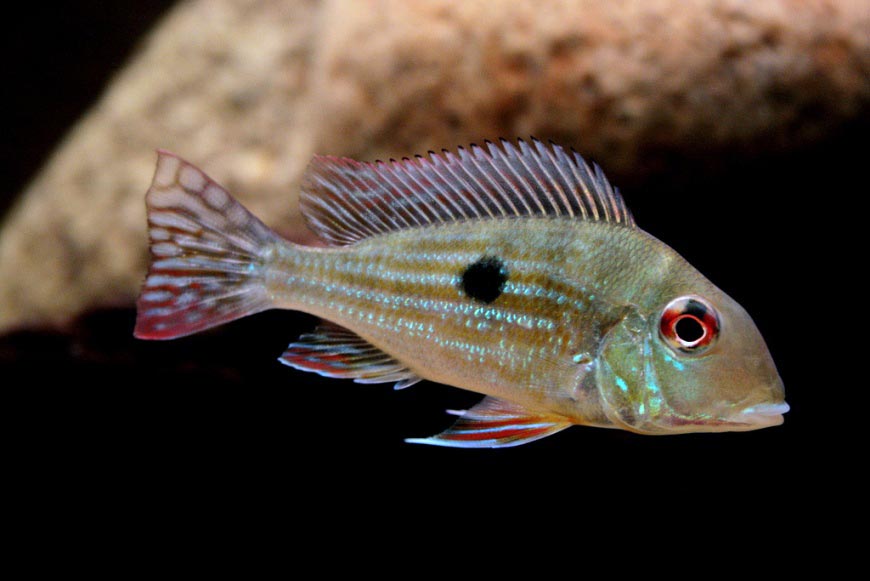
Adult individuals reach a length of up to 20 cm. Sexual dimorphism is weakly expressed. Males are somewhat larger and have elongated rays of the pelvic fins. The predominant color is yellow, the fins and tail are red with blue strokes. There is a characteristic black spot on the body. In dominant males, vertical dark stripes appear on the body.
Food
The fish feed near the bottom, picking up a portion of the soil with their mouths and sifting through the sand in search of small invertebrates. In home aquariums, it will accept sinking food, for example, dry flakes, pellets in combination with frozen brine shrimp, daphnia, bloodworm pieces. Feed small meals 3-4 times a day.
Maintenance and care, arrangement of the aquarium
The optimal size of the aquarium for a group of 5-8 fish starts from 600 liters. The design uses sandy soil, several large flat stones and various snags. Live aquatic plants are acceptable among shade-loving species, although they are practically not found in natural reservoirs. It is recommended to plant them in separate pots submerged in the ground to avoid digging them up while feeding the fish. The lighting level is subdued.
Geophagus dicrozoster is very susceptible to water quality deterioration (accumulation of nitrogen cycle products), fluctuations in hydrochemical parameters and temperature. The best way to achieve stable water conditions is to equip the aquarium with all the necessary equipment, a filtration system is key, as well as regular maintenance procedures. The latter include weekly replacement of part of the water (about 50% of the volume) with fresh water, removal of organic waste (feed residues, excrement), etc.
Behavior and Compatibility
These cichlids are peaceful towards other species and can get along with non-aggressive fish of comparable or slightly smaller size. Intraspecific relationships are built on a hierarchy headed by the alpha male. It is desirable to maintain a group size of at least 5-8 individuals. At smaller numbers, weak fish may be attacked by dominant individuals.
Breeding / breeding
In favorable conditions, the appearance of fry is very likely. With the onset of the mating season, the male and female form a temporary pair. The female lays her eggs on some flat flat surface, such as a stone, and stays next to the clutch until the juveniles appear. The fry hatch in 3-4 days. In some cases, the female may take them into her mouth for protection, where they will remain until they become too large. Periodically, they will swim out of their “shelter” to feed. Sometimes the male joins in taking care of his offspring, but much more often he will take care of the next female.
Fish diseases
The main cause of diseases lies in the conditions of detention, if they go beyond the permissible range, then immunity suppression inevitably occurs and the fish becomes susceptible to various infections that are inevitably present in the environment. If the first suspicions arise that the fish is sick, the first step is to check the water parameters and the presence of dangerous concentrations of nitrogen cycle products. Restoration of normal/suitable conditions often promotes healing. However, in some cases, medical treatment is indispensable. Read more about symptoms and treatments in the Aquarium Fish Diseases section.



